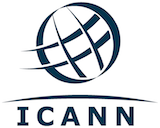Cambios en el nombre del registrador
El Acuerdo de Acreditación de Registradores exige a los registradores que notifiquen a la ICANN (Corporación para la Asignación de Nombres y Números en Internet) cualquier cambio realizado a sus nombres, dentro de los 30 días de acontecido dicho cambio.
Si un registrador acreditado por la ICANN cambia el nombre de su empresa, debe proporcionar a la ICANN la documentación oficial del cambio de nombre por correo electrónico a registrarupdates@icann.org, o por correo postal o fax.
Algunos ejemplos de documentación aceptable incluyen:
- Enmienda a las Actas Constitutivas (presentada ante la autoridad de registro correspondiente, si procede);
- Formulario o certificado de cambio de nombre emitido por el gobierno;
- Prueba del cambio de nombre emitida por la autoridad de registro empresarial;
- cualquier otro documento oficial que muestre tanto el nombre antiguo como el nuevo nombre de la entidad corporativa.
Si el registrador busca agregar un nombre ficticio ("operar bajo el nombre de" o "DBA", por sus siglas en inglés) al nombre legal publicado en los sitios web de la ICANN, el registrador debe presentar:
- una descripción de los pasos legalmente requeridos que el registrador tomó para hacer negocios bajo el nombre ficticio;
- y, si corresponde, los documentos o formularios utilizados para crear o registrar el nombre ficticio.
Una vez que la ICANN ha recibido la documentación correspondiente, actualizará el nombre de la empresa del registrador en sus archivos y anunciará el cambio de nombre a los registros.
El registrador es responsable de completar los requisitos que los registros puedan imponer para documentar el cambio de nombre.
Si el cambio de nombre se debe a una cesión o a un cambio de control, consulte las páginas Transferencia (cesión) de una acreditación de la ICANN o Compra de un registrador acreditado por la ICANN.
